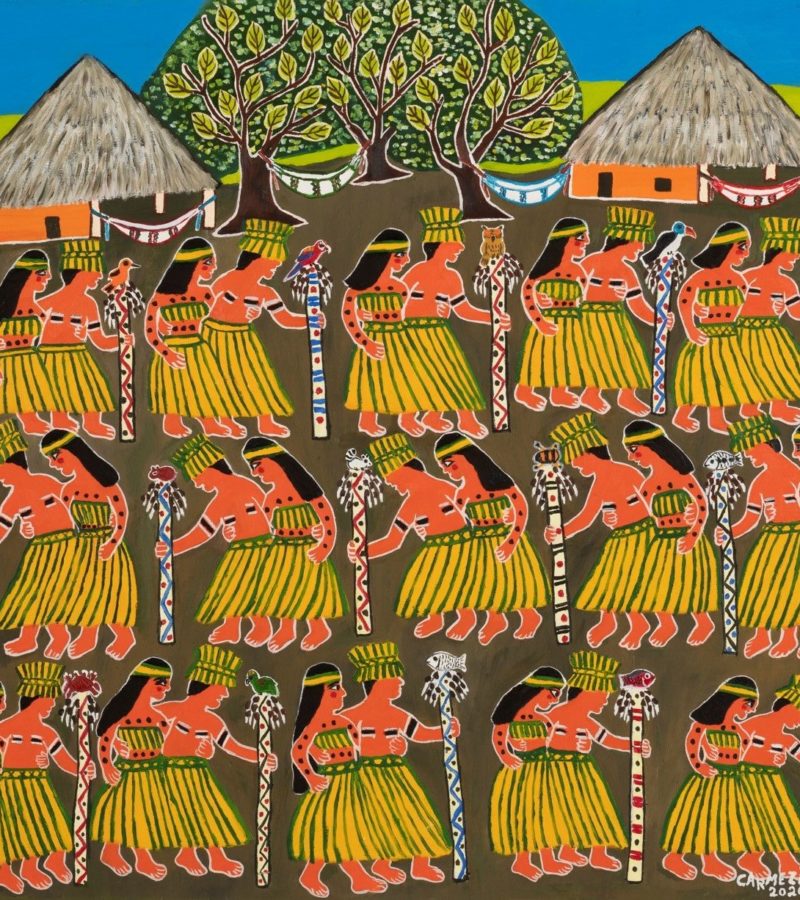I find myself in the place that claims to be the city with the most museums in the South American continent: Mexico City. Administered by two spheres of government, at the federal and local levels, as well as by the Universidad Autónoma de México (UNAM), the 171 museums located here have established control over the disruptive possibilities of the imagination in relation to the city’s reality.
This territory, which belonged originally to Indigenous people and is now a palimpsest of hundreds of violent years, was a Distrito Federal [Federal District] until 2016, when it was consolidated as a City, a gesture of re-foundation in line with global policies of neoliberal governance and their reinforcement of borders. It is the ‘citizen’ – the legal, productive, capable, educated, Spanish speaking, non-criminal, ‘human’ being – the political subject who maintains the functioning of this system, nucleus of the necropolitical force of the Mexican state. For in Mexico City, like all former capitals of Spanish colonies, there is a concentration of those political-economic elites, mostly criollos and white-mestizo families, who benefit from the exploitation, plundering and dispossession of bodies, lands, rivers, lakes, forests, beaches, mountains and subsoil. The city is also the command centre for more than 62,954 military personnel,1 deployed throughout Mexican territory; it is the centre of a war machine against drug trafficking that for fourteen years has killed above all poor and/or racialised people, and with impunity, this being a ‘narco-state’. In short, I find myself in a city that overflows with coloniality.


Mexico City, or CDMX according to its branding for international tourism, was named the ‘Cultural Capital of America’ under the administration of its current head of government, Claudia Sheimbaum.2 The 171 museums located in this city make up one of the main material forces that sustains the centralism of the Mexican cultural system. It could be assumed from this that the field of art and culture in Mexico City would have long since developed decolonial strategies. Yet those of us in the urban population who work in cultural industries are not used to practicing political imagination through radical collective organising. On the contrary, the ethos that is installed through the professionalisation of the arts, which had its boom throughout the nineties and early 2000s, is a tremendously individualistic, market-driven one, in tune with the structure of global whiteness that disassociates the drive for community from the practice of life. Workers are reduced to precarity, alienation, indifference and mediocrity.
If decoloniality is a practice of destabilisation and dislocation, aimed towards sabotaging the system that runs through our bodies from the ‘colonial-capitalistic unconscious’,3 as Suely Rolnik names it, we must find ways of recognising ourselves in herds, of embodying a consciousness oriented towards the end of the world we inhabit. Museums, along with other democratic institutions of the modern-colonial world appropriate the critique of oppression and present us with mirages of inclusion and diversity in ways that keep power structures intact. As my friend Daniel Sepulveda points out, the museum as we know it today makes political imagination impossible. The regime of governance that runs a city organises this exhibition device as an intellectual space the purpose of which is to regulate the poetic-political potency of artistic practices through a classist, racist and cis-hetero-patriarchal understanding of the world. This is in turn assured by the institutional tool that is publishing. Through curatorial texts and essays contained in catalogues, monographs, magazines and compilations produced by exhibition devices in alliance with the academy, the imagination that constructs our relations with objects and images is often reduced to a language accessible only to a very few in order to maintain a status quo.
In Mexico City, decolonial efforts to shake the social body of cultural workers, awakening a consciousness beyond the mentioned stagnant logic, are only recent. In recent years, however, tremors have been raised with an increasing force thanks to the work of dissemination, translation and pedagogy that cultural workers such as artists, curators and researchers (both self-taught and academic) have carried out through publishing and self-managed life-long learning platforms.4 Nevertheless, we must remember that every published text under the current system runs the risk of limiting ‘the political’ – the quotidian ways of living by doing, within the field of discourse – a Cartesian attempt to restrict politics to the sphere of the ‘mind’. As cultural workers, we tend to overvalue publishing as if the circulation of words and images were enough to change the world. But we must ask ourselves, what impulse is hidden in the modern obsession for converting life into organised information and theory on ‘culture’? Often there is a systemic drawing of boundaries around what is sayable and intelligible, a denial of those non-colonial languages and knowledge forms that exist outside what is recognisable for exhibition devices such as the museum and the publication. In this context, we should ask ourselves, is it collectively that we attempt to reify the desires contained within those artworks we exhibit? Is it ways of living together that we are formulating?
Despite the relative abundance of cultural workers disseminating decolonial discourse, the grammar of bodies; our complex complicity, remains to be better understood. To paraphrase Walidah Imarisha, hegemony – the modern-colonial order – is rapidly responsive and adaptive; In order not to fall into its traps, we must define collective strategies for imaginatively disrupting the rhythm and flow that drives the hegemonic force. Currently, the rhythm and flow of imagination in the ‘art system’ is defined by the parameters of hierarchy, dichotomy and categorisation that lie at the centre of the museum.
There are two ways to kill the capitalist hydra, the name the Zapatistas give to the toxic system that we face. The first is by cutting off its heads one by one, which will always result in their reproduction. This strategy entails a titanic effort that exhausts, fragments and decomposes us. The second is to aim directly at the heart that is shared by these heads. The capitalist hydra of the art system might be thought of as having four heads in continuous reproduction: the museum, the biennial, the art fair and the academy. All are communicated through a nervous system of curatorial statements and essays connected to a common heart: the collection.
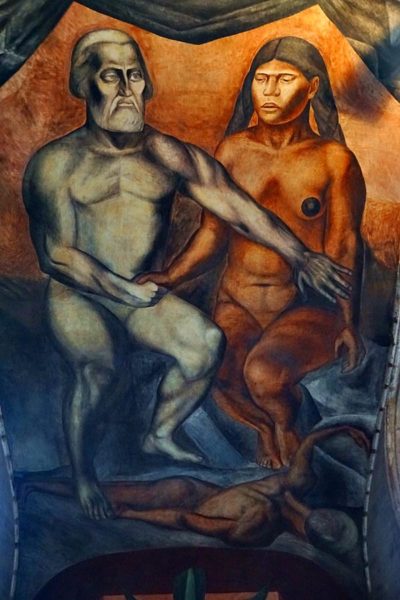
Due to its material and symbolic characteristics, conceived from Western-centric points of view, a collection is produced on a cognitive level by the museum. It exists according to functions of management – registration, research, documentation, preservation and display. In this respect, the texts and images produced by and around collections, disseminated through publishing in reciprocity with exhibitions programs, can be understood as sociocultural synapses – sites of a back-and-forth: The editorial processes involved in a collection’s public management work in reciprocity with cultural policies, hegemonic canons, concepts, theories and life stories. Through this dialogue, these editorial processes produce reality. How did exhibition devices such as the museum and publications contribute to forming the systems of the cities we inhabit?
Of the 171 museums in Mexico City, not all have a permanent collection. For this reason, I would like to call particular attention to the role of exhibition devices in constructing and dismantling state art collections, presenting as a case study the narratives concentrated around the Instituto Nacional de Bellas Artes y Literatura [National Institute of Fine Arts and Literature] (INBAL for its acronym in Spanish).5 As researcher Ana Garduño explains, along with the Instituto Nacional de Antropología e Historia [National Institute of Anthropology and History] (INAH for its acronym in Spanish), this institution was created in 1946, giving continuity to the post-revolutionary modern project of the mestizo nation,6 with the ‘objective of designing and establishing cultural policies – in the territory of the archaeological, historical and aesthetic – emanating from a State that continued to build its institutional foundations in the same way that it already regulated internal affairs (economic, political and social)’. In other words, its objective was to internally reinforce coloniality. At that time, cultural policies revolved around:
[A] campaign for the recognition and accreditation of political-diplomatic leadership [of Mexico as an ally country and as a mediator with the ‘Latin American brotherhood’], [in which] locally made art was a decisive ideological argument. Placing a stand or pavilion at the Universal Fairs, designing panoramic exhibitions that would circulate through the most important cultural capitals – always condensed into four nuclei: Mesoamerican, Virreinal, Modern and Popular – was a core tactic of the Mexican government.7
The eventual expansion of INBAL’s network of museums,8 organised according to the four ‘nuclei’ mentioned by Garduño, produced an internally colonial order through the formation of collections that legitimised this reality with reference to (white) national identity. Here we saw an idea of culture that naturalises racism, sexism, classism and heterosexuality as sociocultural norms within an independent and mestizo nation. Thus, the stories built for over 70 years by the Mexican state through its exhibition devices have been stories that reinforce ‘aesthetic governance’, which, as manuel arturo abreu explains is ‘subsumption to commodify difference and deploy it in service of institutionality’.9 Institutions romanticised what Mary Louise Pratt calls ‘contact zones’ – spaces where the colonisers and the colonised meet to establish relationships of coercion, radical inequality and insurmountable conflict.10 Contact zones in the context of the arts served to create a cognitive understanding of ‘high art’ and ’low art’ categories, the latter being associated with Indigenous and Black aesthetics. Here, as abreu explains, we saw ‘the modernist project of treating non-whiteness as raw material for white speculation,’11 which, in this case, facilitated processes of folklorisation and idealisation that allowed a ‘Mexican’ national identity to be formed through cultural appropriation.12 This is identifiable in Muralism and the Mexican School of Painting, to mention the most evident examples – forms in which whiteness was aesthetically encoded.
How should those of us who have benefited from coloniality respond? Faced with the incommensurability inherent in the question, it is nevertheless necessary to activate an ethic of colonial responsibility,13 aimed at a kind of betrayal of one’s own whiteness. As a white editor in charge of a magazine dedicated to the dissemination of critical thinking around artistic and curatorial practices in the country and the continent, I myself have a responsibility to betray the colonial pact on which the museum, as a cultural axis of life in the city, is based. Thereon, a fundamental mission is to host primarily those voices that have been marginalised in the version of history told through official exhibition devices. My work is moved by an anti-colonial desire: Fire to the factories of whiteness! How to twist the debased meaning of the slogan ‘decolonise the museum’ with the tools that I have? We need ideas that encourage the destruction of the art system’s capitalist hydra. Strategies to infiltrate the narratives that form collections, to then blow them up. Let’s demystify and subvert its dimensions of value and legitimation until it disintegrates in our unconscious, until it loses strength and can no longer centralise perpetual erasure and accumulation.
By any means possible, let’s cause a short circuit. Circulate knowledge beyond catalogues, books, magazines, newspapers and PDFs; cast perpetual doubt on the algorithm that creates the mirage of a politicised community. Use the tools of publishing to publish differently. Translate knowledge between languages that have common genealogies of resistance towards oppressive power. Organise conversations, public readings, book presentations and spoken word performances in which radical voices take the floor to tell their stories of resistance, healing and transmutation. Print posters, fanzines, and poems that imagine confrontation and transformation as collective strategies of self-defence. Through whispers and graffiti-spread rumours, create proverbs and aphorisms that motivate joyful and pleasurable disobedience. Make memes that encrypt vital information. Encourage and engage with public speeches that motivate uprising. Let’s imagine together: what radical possibilities have we yet to detonate to destroy the limits imposed by exhibition devices? How are we subverting ‘aesthetic governance’? What if we start by dismantling public collections in relation to politics of reparation? Let’s sell one of Diego Rivera’s murals to repair the damage caused by state violence to Indigenous nations! Given the situation of systematic precarity experienced by cultural workers as a result of the indifference of cultural officials to meeting their needs, those of their families and those of their communities, let’s sell the Tamayo paintings! Why not raffle some works by Francis Alÿs to fund the therapy of our friends who have been violated by men? Let our trans friends buy their hormones and testosterone with what we get from devaluing the work of Gabriel Orozco! Until such time as the collection (and thereby the museum) have been sabotaged, will decolonisation be possible?
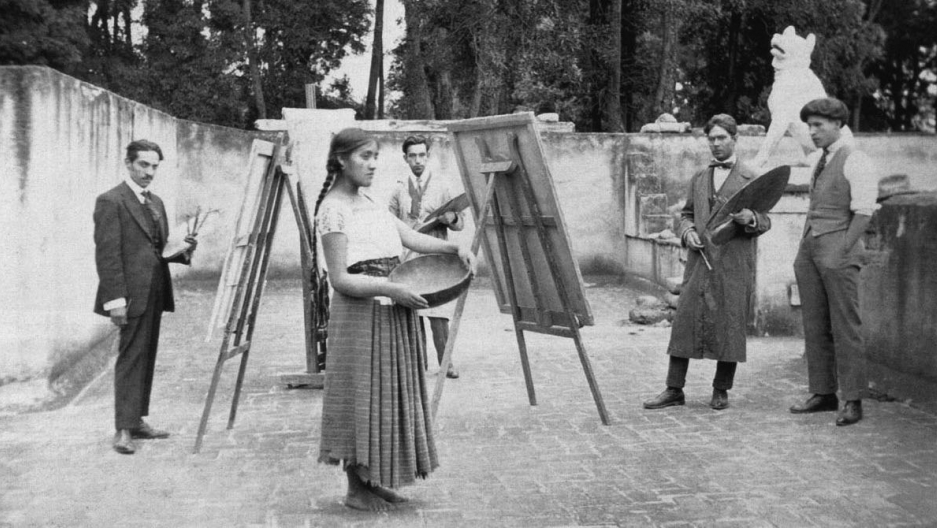
- 1. With rage and joy I borrow this phrase from my friend Daniel Sepúlveda. It was part of his intervention in the exhibition ‘Hospicio de utopías fallidas’, Luis Camnitzer at the Museo Nacional de Arte Reina Sofía, Madrid, Spain, Oct 17, 2018 – Mar 4, 2019.
- 2. Héctor Molina, ‘Cifra récord de militares en las calles, con AMLO’ in El Economista [Politics section], April 7, 2019. Available at https://www.eleconomista.com.mx/politica/Cifra-record-de-militares-en-las-calles-con-AMLO-20190407-0083.html (last accessed on 4 March 2021).
- 3. This title is based on the cultural policy of the ‘right to culture’, centered on the megaproject Chapultepec: Naturaleza y Cultura, a public-private eco-whitening plan, informed by the biocultural discourse that seeks to deform the Chapultepec Forest through its designation as an ‘ecological park’ planned to be ‘one of the largest cultural complexes in the world’. Under the direction of artist Gabriel Orozco, this project seeks to turn culture into entertainment and business, masking the territorial and administrative violence exercised by the Mexican state. For more information see Maleza crítica, ‘Chapultepec: bioculture in dispute’ in Terremoto [Opinion section], December 13, 2020; and Diego del Valle Ríos, ‘Neoliberarnos: la deuda como política cultural de la 4T’ in GasTv [Archive section], December 2019.
- 4. Suely Rolnik, Esferas de la insurrección: Apuntes para descolonizar el inconsciente, Buenos Aires: Tinta Limón, 2019.
- 5. These include Tumbalacasa Ediciones, of Andrea Ancira, Mauricio N Andrade, Fernando Arpio and Daniela Ramírez; Hysteria magazine of Liz Misterio; Desculonización by Maldita Genithalia; Círculo Permanente de Estudios Independientes (CIPEI) founded by Daniel Sepúlveda; Despatriarcalizar el archivo by Natalia de la Rosa and Roselin Espinoza; Fiebre Ediciones; Taller de Ediciones Económicas by Nicolás Pradilla and Gabriela Castañeda; Hormiguero by Sol Aréchiga Mantilla; Tlaxcala3, managed by Alí Cotero and Clara Bolivar; Terremoto, directed by Dorothée Dupuis and edited by me; URDIMBRES: Feminismos Decoloniales y Saberes Nómadas coordinated by Norma Angélica Silva Gómez; Chiquilla te Quiero edited by Javier Zugarazo Tamayo; Feminasty, Nohacernada, among many others.
- 6. A bit of context for readers from other locations: Over 92 years, Mexico has been politically formed through priísmo, a political regime articulated through the Partido Revolucionario Institucional [Institutional Revolutionary Party], which is guided by the values and ideals of the white-criollo independent republics, following neoliberal, heterocapitalist logics. Until December 2015, this regime articulated its cultural policy through the Secretariat of Education, which was in charge of the Consejo Nacional para la Cultura y las Artes [National Council for Culture and the Arts] (Conaculta for its 6. acronym in Spanish), a decentralised administrative body created on December 8, 1988 to oversee INBAL, then known as INBA. Its objective was to promote, support and sponsor events that articulated art and culture in the nation. In 2015, it was transformed into the current Secretariat of Culture.
- 7. Mestizaje in Mexico is a political-identitarian strategy, devised by the eugenicist José Vasconcelos in the 1920s, that imposes a humanist cultural policy. By creating the myth of ‘the cosmic race’ – a melting pot of all races invented by Spanish colony – it in fact homogenises the population, socioculturally speaking, by fostering the nationalist desires aligned with whiteness.
- 8. Ana Garduño, ‘Biografía de una institución cultural: el INBA de México. Red museal y praxis coleccionístic’ in Revista Grafía, Universidad Autónoma de Colombia, vol.10, no.1, January – June 2013, p.11.
- 9. Ibid., p.13: ‘Between 1958 and 1964 came the so-called ‘museum term’. This is the first episode in the process of setting up a network of INBA museums and the definitive abandonment of the concept of a single gallery for art produced in Mexico. It was the most ambitious renovation of the federal museum system, implemented by the government of President Adolfo López Mateos. For the ‘fine arts’ sector, the plan consisted of opening four permanent enclosures, with profiles and vocations as specific as they were complementary to each other. The first two would settle in pre-existing spaces that were set up for the exhibition of New Hispanic and European art: the Virreinal Pinacoteca and the San Carlos Museum. Buildings were built on purpose for the remaining two, given the importance given to each. The Museum of Modern Art was located in the recently created museum circuit of the Chapultepec forest, to the west of Mexico City; The Museum of Art and History was located in Ciudad Juárez, Chihuahua, with the intention of initiating the conversion of INBA into a fully national institution, with future museums located in different parts of the Mexican Republic.’
- 10. manuel arturo abreu, ‘Against the Supremacy of Thought’, Rhizome, January 8, 2018, available at https://rhizome.org/editorial/2018/jan/08/against-the-supremacy-of-thought/ (last accessed on 4 Mar 2021).
- 11. I quote Yuderkys Espinoza Miñoso’s reference of Mary Louise Pratt in her essay ‘Las negras siempre estamos desnudas’ in Devuélvannos el oro: Cosmovisiones perversas y acciones anticoloniales, ed. Colectivo Ayllu, Madrid: Matadero, 2018.
- 12. manuel arturo abreu, ‘Against the Supremacy of Thought’, op. cit.
- 13. Yásnaya Elena A. Gil, 'El estado mexicano como apropiador cultural' in Revista de la Universidad, Ágora, july 2018, available at: https://www.revistadelauniversidad.mx/articles/0bb50a13-2ad8-40e3-9972-5f35dd35184f/el-estado-mexicano-como-apropiador-cultural (last accessed on 16 March 2021).
- 14. I echo the words of the poet Tatiana Nascimento who points out how white people critical of coloniality tend to recognise the privilege of whiteness through feelings of guilt, anguish and fragility that are then used as self-flagellating excuses not to take responsibility for the colonial violence, exerted on racialised people, on which the material advantages of their lives have been built. ‘Racial responsibility is an individual and collective understanding of one's own whiteness, and requires recognition of the structuring racism of the historical, social, cultural, economic, sexual, gender, epistemic, psychological, emotional and spiritual relationships and practices that underlie society as one of white supremacists.’ Only by recognising that whiteness is the core of racism, and by giving up privileges, will white people begin to effect the kind of material redistribution that ‘repairs’ these harms.
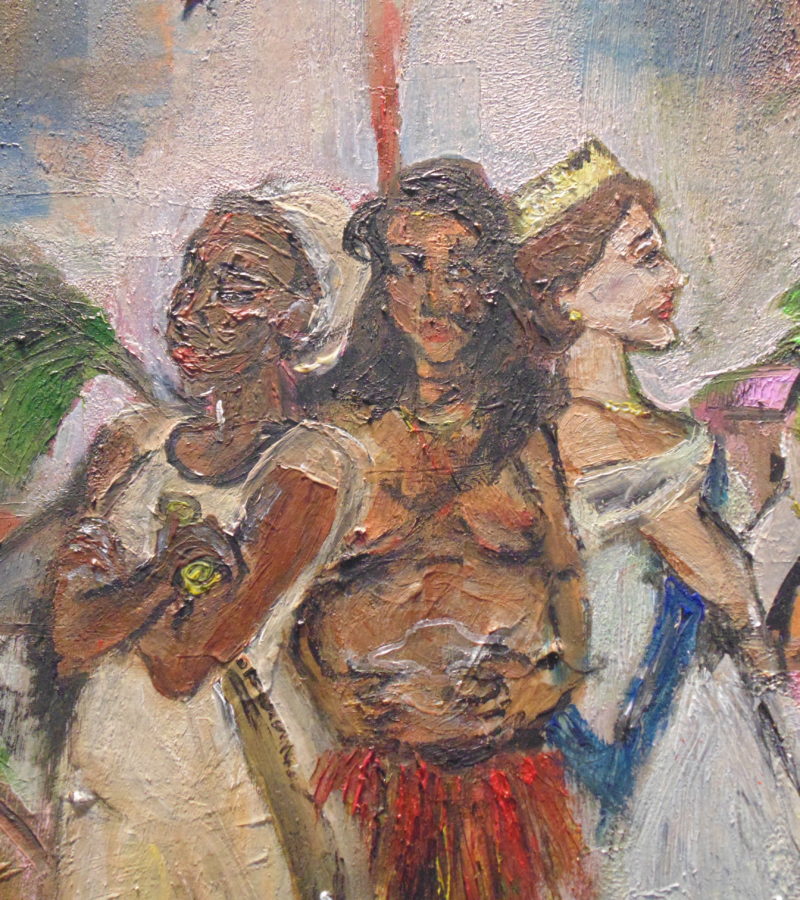
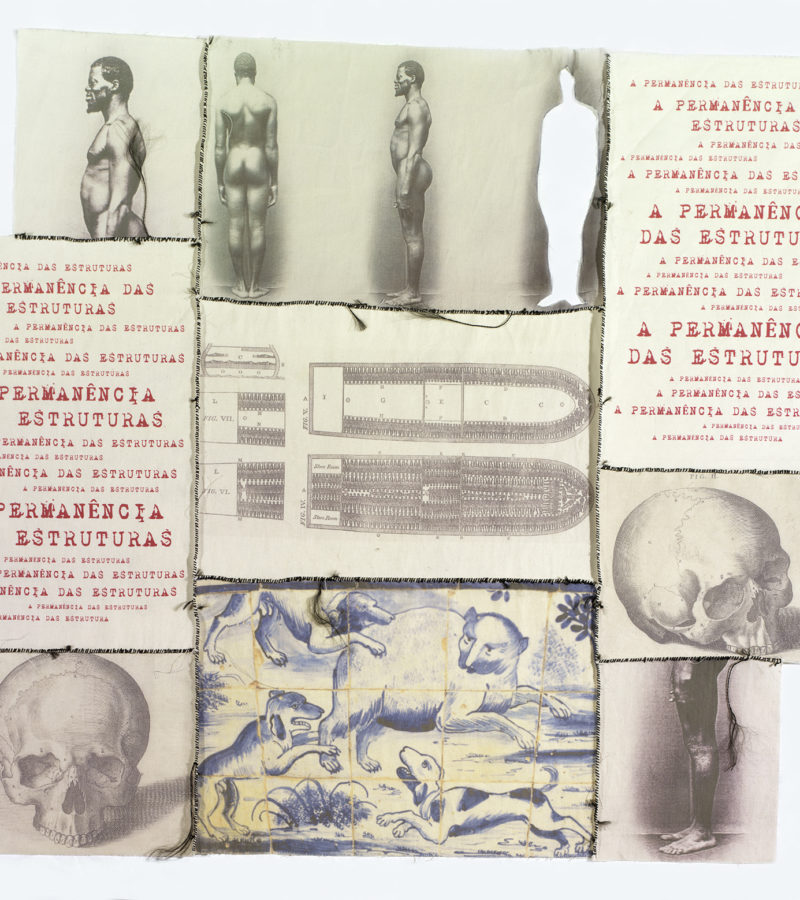
![[Description: Black and white photograph of people looking out of a window]](https://www.afterallartschool.org/wp-content/uploads/2021/03/Thomaz-Farkas_Rahul-Rao-800x900.jpg)
![[Description: Valeska Soares, Duplaface (Branco de titânio), 2017. Oil and cutout on existing oil portrait, 71 x 56cm. Courtesy MASP]](https://www.afterallartschool.org/wp-content/uploads/2021/03/Osmundo_Valeska-Soares-800x900.jpg)

